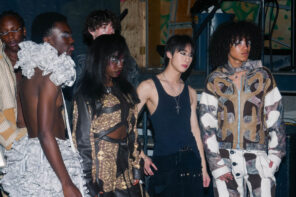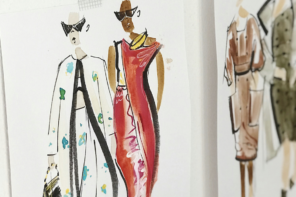Sharpay Evans was my very first “it girl.” As a six-year-old child, I didn’t care about her sabotaging antics; she possessed all the hot pink and glitter I so desperately desired. As an adult, I now recognize how these acts of sabotage might be problematic, but for a few years, I coveted her extravagant style. However, I’ve recently pondered how her character managed to maintain her signature style for so long—a feat that wouldn’t be feasible in today’s pop culture climate. Sharpay was an overdramatized caricature of mainstream femininity; her portrayal of womanhood and fashion trends remained consistent. By today’s standards, a woman remaining a constant presence in the spotlight for several years because of her aesthetic is nearly unheard of. The years-long reigns of the women many of us once styled ourselves after are now a thing of the past. Is the “it girl” the latest casualty of the ever-accelerating fashion trend cycle?
These women mirror the concept of the “it girl” in their influence over non-regal populations. However, they were authoritarian rulers with a captive audience, making them fashion icons by default for as long as their reigns permitted.
The “it girl” can be defined by her ability to curate a wardrobe filled with all the trending items and accessories of her time. She pushes the envelope, but only to a certain extent. She embodies the popular aesthetic, makes small aspects of it her own, then observes as her slight modifications trickle down from couture to ready-to-wear. The influence of “it girls” only lasts as long as this trickle-down process continues. As we move through history we can watch the reign of an “it girl” shrink from a few decades, as seen with queens and empresses, to a few months, with TikTok stars.
Long before Sharpay, one could argue that the world’s “it girls” were monarchs, queens and empresses who represented the pinnacle of women’s fashion for their regions. They had access to the finest materials and worked with premier designers. These women mirror the concept of the “it girl” in their influence over non-regal populations. However, they were authoritarian rulers with a captive audience, making them fashion icons by default for as long as their reigns permitted. We see this come to life in Sofia Coppola’s 2006 film Marie Antoinette where the young Antoinette has infinite access to lavish amounts of clothing and accessories throughout the length of the film.
Sharpay could wear an outfit, have it go viral, see it replicated on platforms like Shein or Romwe, and then disappear into oblivion within a week.
As the world transitioned from monarchies and empires to elections and industrial revolutions, so did the definition of the “it girl.” In the 20th century, the “it girls” were heiresses to massive fortunes. Heiresses from some of the world’s wealthiest families, such as Paris Hilton and Gloria Vanderbilt, had a much shorter window of opportunity to influence fashion than their royal predecessors. What sets Hilton and Vanderbilt apart from today’s influencer “it girls” is how they reached their audiences. Fashion news used to thrive in newspapers and magazines. Be it Vogue or Tigerbeat Magazine, they were on the cover but only once a month. For monarchs, their influence spread only as quickly as word of mouth, and for heiresses, it spread as fast as their images could be published. However, for today’s internet “it girls,” there is virtually no limit.
If Sharpay Evans were on TikTok today, she might gain notoriety for a week or two and spark a new fast fashion aesthetic. Her odds of remaining relevant for more than a few months would be almost zero. This can be attributed to both the increased speed at which we consume content and the alarming rate at which we now produce clothing. Sharpay could wear an outfit, have it go viral, see it replicated on platforms like Shein or Romwe, and then disappear into oblivion within a week. The constant quickening of both fashion consumption and media turnover is causing the existence of the it girl to collapse in on itself leaving a gap in the mainstream. It is hard to tell how this void will be filled, but it will inevitably change the way fashion media is produced and consumed.








